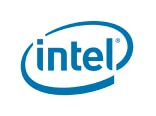August 28, 2019
The Figure-Eight Approach to Network Lifecycle Management
Managing IT should be an ongoing process — not an event that only happens when it’s time to replace infrastructure.

Technology moves fast. As a result, organizations that think about their network infrastructure only every few years — when it’s time for a major hardware refresh — will quickly fall behind.
At CDW, we’ve found that customers have the most success when they treat network lifecycle management as just that: a true lifecycle, with steps that circle back around on themselves and repeat like a figure eight, allowing organizations to continuously fine-tune and improve their environments.
An effective network lifecycle management plan should include these essential steps.
Step 1: Assess, Plan, Design
When our solution architects begin working with an organization on a network refresh, they start by assessing the current environment, learning about the organization’s goals and identifying solutions that will help close the gap between the two. Often, a specific business objective or desired application will drive network investments. For instance, an organization may target videoconferencing as a solution that will boost collaboration and productivity while also reducing travel costs. In this case, CDW’s solution architects will work with the organization to build out a cost-effective network capable of supporting not only videoconferencing, but also other applications and anticipated future growth.
Step 2: Implement
Once a customer decides on a network design and makes a purchase, CDW’s solution architects implement the plan. It’s important for the implementation phase to include not only the actual solution deployment, but also further assessment to identify additional potential benefits and use cases for the technology. For instance, an organization might deploy new networking infrastructure primarily to enable videoconferencing but then realize that the hardware also supports network access control.
For customers with enterprise agreements, CDW provides a customer success manager to help organizations ensure that they’re optimizing their use of the new infrastructure. But all organizations should take time to conduct this sort of analysis, either through internal IT staff or third-party partners. It’s extremely common for organizations to spend significant sums on technology tools, but then to take advantage of only a small portion of their features. A thoughtful implementation process can help organizations to maximize their return on investment.
Step 3: Refine
Over time, organizations should seek additional ways to leverage their network infrastructure. For instance, the primary goal of a new wireless networking infrastructure will likely be to simply improve internet connectivity and productivity for employees. But over time, IT and business leaders should unlock additional value from the wireless network through applications such as wayfinding and data analytics.
Step 4: Go Back to the Beginning
Organizations should refresh their network infrastructure every few years. But companies that thoughtfully implement their networks and refine them over time will be far ahead of their peers when the time comes for an upgrade. By keeping an eye out for new ways to extract value from their network infrastructure, IT and business leaders can position their companies to continuously evolve, make the most of their current solutions and prepare for whatever comes next.
That’s how you keep up with the pace of innovation.
This blog post brought to you by:


